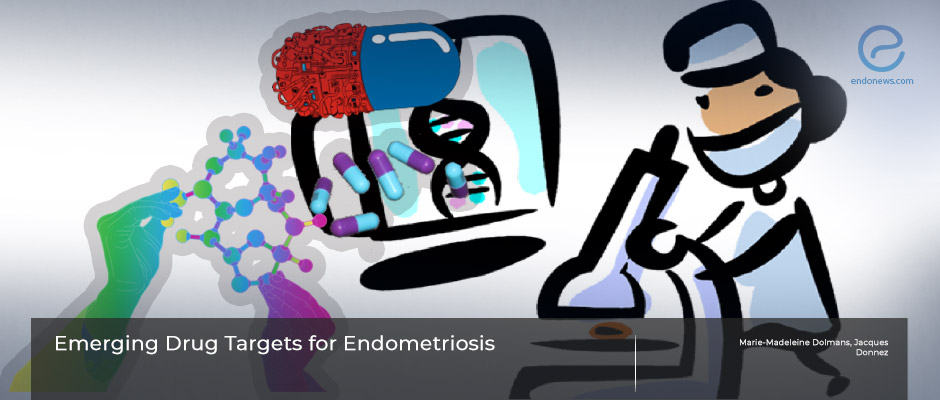Treatment of superficial dyspareunia using topical estrogens in postmenopausal women with a history of endometriosis
Genitourinary syndrome of menopause is defined as a collection of symptoms and signs caused by hypoestrogenic changes to the labia majora/minora, clitoris, vestibule/introitus, vagina, urethra, and bladder that occur in menopausal patients. Sexual dysfunction and superficial dyspareunia can be experienced…
Key Points Lay SummaryScientific unfolding will lead new drug targets
Drs. Dolmans and Donnez from academic institutions located in Brussels, Belgium, have published their comprehensive review on the current pathophysiological concepts in endometriosis with possible drug treatment potentials in the recent issue of a scientific journal named “Biomolecules”. As a…
Key Points Lay SummaryWhat causes pelvic pain? Androgens or estrogens?
A comparison between women and men reveals that women suffer more pelvic pain. This reality raises the possibility of the pain-relieving effect of testosterone or androgens. It would be a wise solution to investigate how androgens affect pain at different…
Key Points Lay SummaryPhytoestrogens could have promising effects in endometriosis management
Dr. Bartiromo and associates from Milan, Italy published a systematic review on phytoestrogens and endometriosis in the periodical “Nutrients”. Endometriosis has features of chronic inflammation based on uncontrolled hormonal response and immune-mediated dysfunctions. Estrogens are endocrine and paracrine agents that could yield…
Key Points Lay SummaryResveratrol, isoflavones and puerarin have favorable in vivo results in endometriosis studies
Xia Cai and associates from research units located in China published their review article on the relationship between phytoestrogens and endometriosis in the scientific periodical named “Pharmacology”. The great variation in the prevalence of endometriosis raises questions in regard to…
Key Points Lay SummaryWhat happens to women with endometriosis after menopause?
Endometriosis affects women in their reproductive period of life, with expected regression of lesions in the postmenopausal period. Literature about postmenopausal endometriosis assessing the prevalence, pathogenesis, and treatment is limited. As 2-5 % of postmenopausal women are affected by this uncommon condition, developing stress…
Key Points Lay SummaryA clearer picture of "endometriosis after menopause"
Delfin Avendano Tan and Marie Josephine Guanlao Almeria are obstetrician-gynecologists from the Philippines. They recently published a review article titled "Postmenopausal endometriosis: drawing a clearer picture". In this paper, the authors discussed the pathogenesis, risk factors, and management of postmenopausal…
Key Points Lay Summary
 By Hale Goksever Celik
By Hale Goksever Celik

 By Nasuhi Engin Aydin
By Nasuhi Engin Aydin

 By Selma Oransay
By Selma Oransay




 By Irem Onur
By Irem Onur